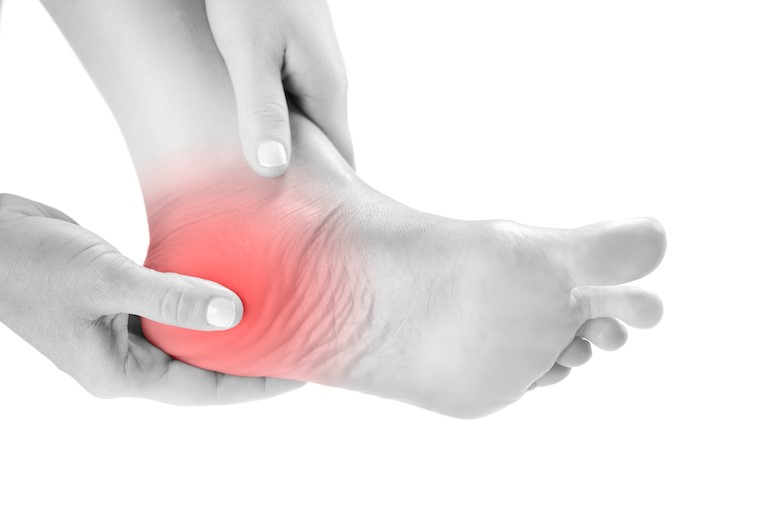Suffering from Heel Pain? 6 Easy Treatments to help.

- Do you get pain under your heel when you get out of bed?
- Do you find it hard to walk because of heel pain?
- Have you stopped exercising because of heel pain?
- Are you missing out on fun activities like hiking or playing with your kids because of heel pain?
- Are you limping and getting pain in other areas of your body because of pain in your heel?
At PodiatryFirst we see this condition all the time in our clinic, and let me tell, you don’t need to suffer anymore. We are here for you.
We specialise in treating this very common yet painful condition. We get results for all our clients and we can help you too.
Heel pain is most often caused by plantar fasciitis, a condition that is sometimes also called heel spur syndrome when a spur is present. Heel pain may also be due to other causes, such as a stress fracture, tendonitis, arthritis, nerve irritation or, rarely, a cyst.
Because there are several potential causes, it is important to have heel pain properly diagnosed. A Sports Podiatrist is able to distinguish between all the possibilities and to determine the underlying source of your heel pain. Treat the cause and the symptoms to get you back to normal activates quickly and safely.
What Is Plantar Fasciitis?
Plantar fasciitis is an inflammation of the band of tissue (the plantar fascia) that extends from the heel to the toes. In this condition, the fascia first becomes irritated and then inflamed, resulting in heel pain.
Causes
The most common cause of plantar fasciitis relates to faulty structure of the foot and overly tight calf muscles. For example, people who have problems with their arches, either overly flat feet or high-arched feet, are more prone to developing plantar fasciitis.
Wearing nonsupportive footwear on hard, flat surfaces puts abnormal strain on the plantar fascia and can also lead to plantar fasciitis. This is particularly evident when one’s job requires long hours on the feet. Obesity and overuse may also contribute to plantar fasciitis.

Symptoms
The symptoms of plantar fasciitis are:
- Pain on the bottom of the heel
- Pain in the arch of the foot
- Pain that is usually worse upon arising
- Pain that increases over a period of months
- Swelling on the bottom of the heel
People with plantar fasciitis often describe the pain as worse when they get up in the morning or after they have been sitting for long periods of time. After a few minutes of walking, the pain decreases because walking stretches the fascia. For some people, the pain subsides but returns after spending long periods of time on their feet.

Diagnosis
To arrive at a diagnosis our Sports Podiatrists will obtain your medical history and perform a thorough biomechanical examination of your foot, legs, muscle and joint range of motion and your your general posture. Throughout this process, the Sports Podiatrist will identify possible causes of the condition.
In addition, diagnostic imaging studies, such as x-rays or other imaging modalities, may be used to distinguish the different types of heel pain. Sometimes heel spurs are found in patients with plantar fasciitis, but these are rarely a source of pain. When they are present, the condition may be diagnosed as plantar fasciitis/heel spur syndrome.

6 Easy Nonsurgical Treatments
Treatment of plantar fasciitis begins with first-line strategies, which you can begin at home:
- Stretching exercises. Exercises that stretch out the tight muscles help ease pain and assist with recovery.
- Avoid going barefoot. When you walk without shoes, you put undue strain and stress on your plantar fascia.
- Ice. Putting an ice pack on your heel for 20 minutes several times a day helps reduce inflammation.
- Limit activities. Cut down on extended physical activities to give your heel a rest.
- Shoe modifications. Wearing supportive shoes that have good arch support and a slightly raised heel reduces stress on the plantar fascia.
- Medications. Pain medication such as paracetamol can be useful, however this treatment only masks the pain rather than eliminating the cause of the condition.
Most people we see in our clinic have tried all of these remedies without success and or have been to numerous practitioner with little or no results.
We specialise in treating this condition and address the cause of the condition and as such achieve results where others have failed. treatment approaches:
When Is Surgery Needed?
Although most patients with plantar fasciitis respond to nonsurgical treatment, a small percentage of patients may require surgery. We try our best for you in preventing surgery, however If, after nonsurgical treatment has failed, you continue to have heel pain, surgery will be considered. We can recommend our trusted register of foot and ankle surgeons to discuss the surgical options with you and determine which approach would be most beneficial for you.
Long-Term Care
No matter what kind of treatment you undergo for plantar fasciitis, the underlying causes that led to this condition may remain. Therefore, you will need to continue with preventive measures. We will provide you a through rehabilitation and prevention plan for you to return to activities safely without this this condition recurring.
We can’t wait to be able to help you get back on your feet sooner rather than later.
To book your FREE Heel Pain Assessment now. Places are limited and offer ends June 30th. Don’t miss out.
Call 9387 1545 to book your consult.
Leave a reply



Thanks for the great tips for helping with heel pain. I like how you said that wearing shoes and doing some stretches can help with it. I’ll have to try that out because my heel has been aching for a long time.
ReplyAmong the products listed on the site, which one is the best?https://must11.com/best-flushing-toilet/
ReplyI’m delighted the various types of heel pain may be distinguished using diagnostic imaging procedures like X-rays. As you noted, patients with plantar fasciitis occasionally have heel spurs, but these are rarely the source of pain. Since the pain in her heels has been plaguing her for days, my aunt has been looking for ways to manage it. She can discover a professional who can assist her with heel pain treatment if I make sure to let her know about this. I appreciate you sharing!
ReplyThis product is my go-to solution for diabetes management. It’s an intelligent assistant that helps me stay proactive and achieve my health goals. <a href="https://404c2z1d43gz3rbbrfdix22-92.hop.clickbank.net" target="_blank">click here</a> to unlock the potential of modern diabetes technology!
ReplyI appreciate it when you said that other diagnostic imaging studies and modalities can be used to fully determine the cause of your heel pain. I have to share this information with my best friend so that she will know what to expect when seeing an NDIS podiatry provider there on the Central Coast. It’s important that the right diagnosis is acquired to ensure that the issue is treated from its roots.
Reply